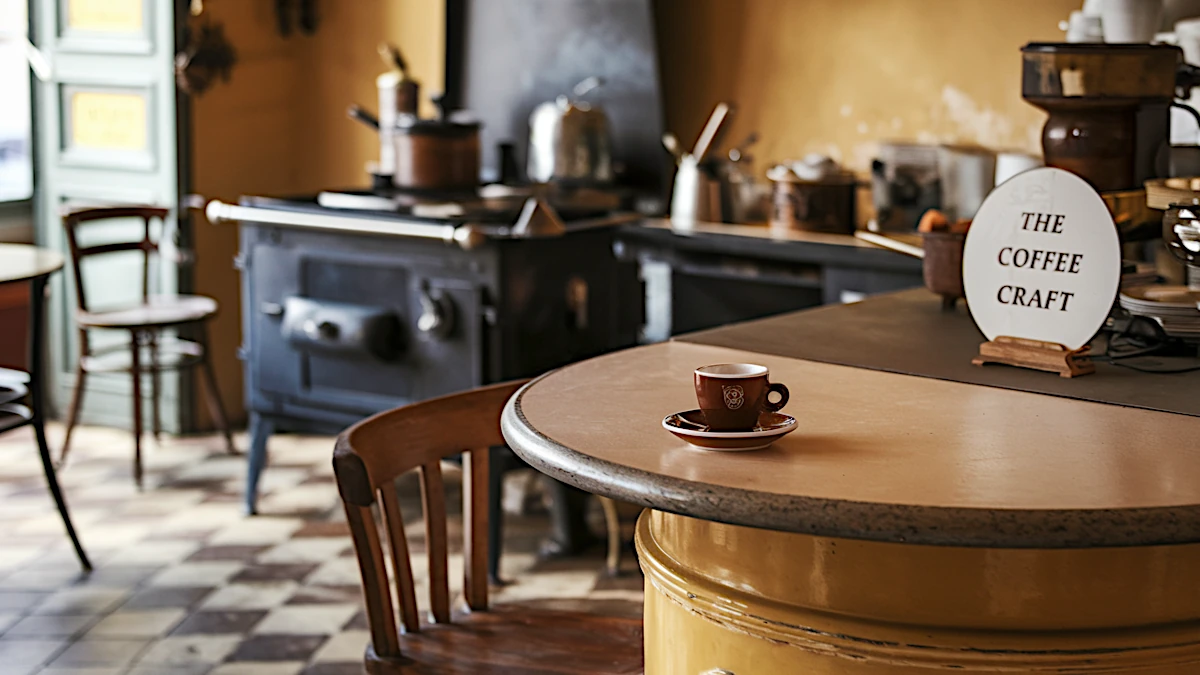European coffee is renowned for its rich history, diverse styles, and cultural significance. But what exactly is European-style coffee? At its core, it refers to the unique coffee traditions and flavors shaped by historical events, regional preferences, and technological innovations. This article delves into the evolution of European coffee styles, focusing on how Robusta beans and post-war trends influenced national tastes. By the end, you’ll understand what makes European coffee truly special.
Table of Contents
The Historical Evolution of European Coffee Styles
The Role of Robusta in Shaping European Coffee
The introduction of Robusta beans dramatically transformed coffee preferences in post-war Europe. By 1960, France’s coffee consumption was 75% Robusta. To counteract its inherent bitterness, French roasters adopted dark, caramelized roasts, creating a bold flavor profile that defined French coffee culture.
In Italy, regional preferences evolved around Robusta. Northern Italy leaned towards milder blends, while southern regions favored Robusta-heavy espressos due to its affordability. Over time, this preference became an ingrained part of Italian coffee traditions.
How Post-War Trends Influenced Coffee Preferences
The aftermath of World War II reshaped coffee consumption across Europe. Supermarkets replaced small grocers, offering mass-produced coffee from prominent national roasters. Television advertising further cemented these brands’ dominance, influencing consumer tastes and fostering ‘national identities’ around coffee.
Distinctive European Coffee Styles by Region
France – Dark Roasts and Bitterness
French coffee culture emphasizes bold, bitter flavors. The widespread use of Robusta led to the development of dark roasts, balancing bitterness with caramelized sweetness. Today, the “café au lait” remains a quintessential French coffee experience.
Italy – A Regional Approach to Coffee
Italy’s coffee culture varies significantly by region. Northern Italy favors lighter, more aromatic blends, while the south embraces strong, Robusta-heavy espressos. This regional variation reflects historical economic factors and has given rise to globally recognized staples like cappuccinos and macchiatos.
Portugal – The Bica and Angolan Influence
Portugal’s coffee identity is intertwined with its colonial history. The “bica” an espresso-style beverage, features blends of Robusta from Angola. During Angola’s peak production in the 1970s, Portuguese coffee culture flourished. Despite disruptions from independence wars, the bica remains a symbol of Portuguese coffee heritage.
The Netherlands and Belgium – Colonial Ties to Coffee
Medium-dark roasts dominate Dutch and Belgian coffee culture, reflecting ties to former colonies. Unique brewing methods, such as drip coffee and traditional percolators, further distinguish their coffee traditions, blending rich history with modern preferences.
Brewing Technology and Cultural Identity
How Technology Transformed Coffee Preparation
Technological advancements like espresso machines and drip coffee makers revolutionized European coffee. These innovations allowed for faster brewing and consistent quality, making coffee more accessible to the masses.
Coffee as a Symbol of National Identity
Coffee consumption transcended class barriers, becoming an everyday ritual in many European countries. Whether it’s an Italian espresso or a French café au lait, coffee reflects cultural pride and identity, uniting people through shared traditions.
Key Takeaways: What Makes European Coffee Unique?
- Diverse Roasting Styles: From France’s dark roasts to Italy’s regional blends, European coffee reflects a wide range of flavors.
- Cultural Significance: Coffee is deeply embedded in European identity, symbolizing history, pride, and social connection.
- Technological Influence: Innovations like espresso machines played a pivotal role in shaping modern coffee culture.
Conclusion
European coffee styles are a testament to the continent’s rich history and cultural diversity. From the bold, bitter flavors of France to the regional nuances of Italy and the colonial influences in Portugal, each tradition tells a story. Exploring European coffee not only deepens appreciation for its flavors but also offers a glimpse into the cultural tapestry that makes it unique. Whether you’re sipping a bica in Lisbon or enjoying a café au lait in Paris, every cup is a journey through history.
